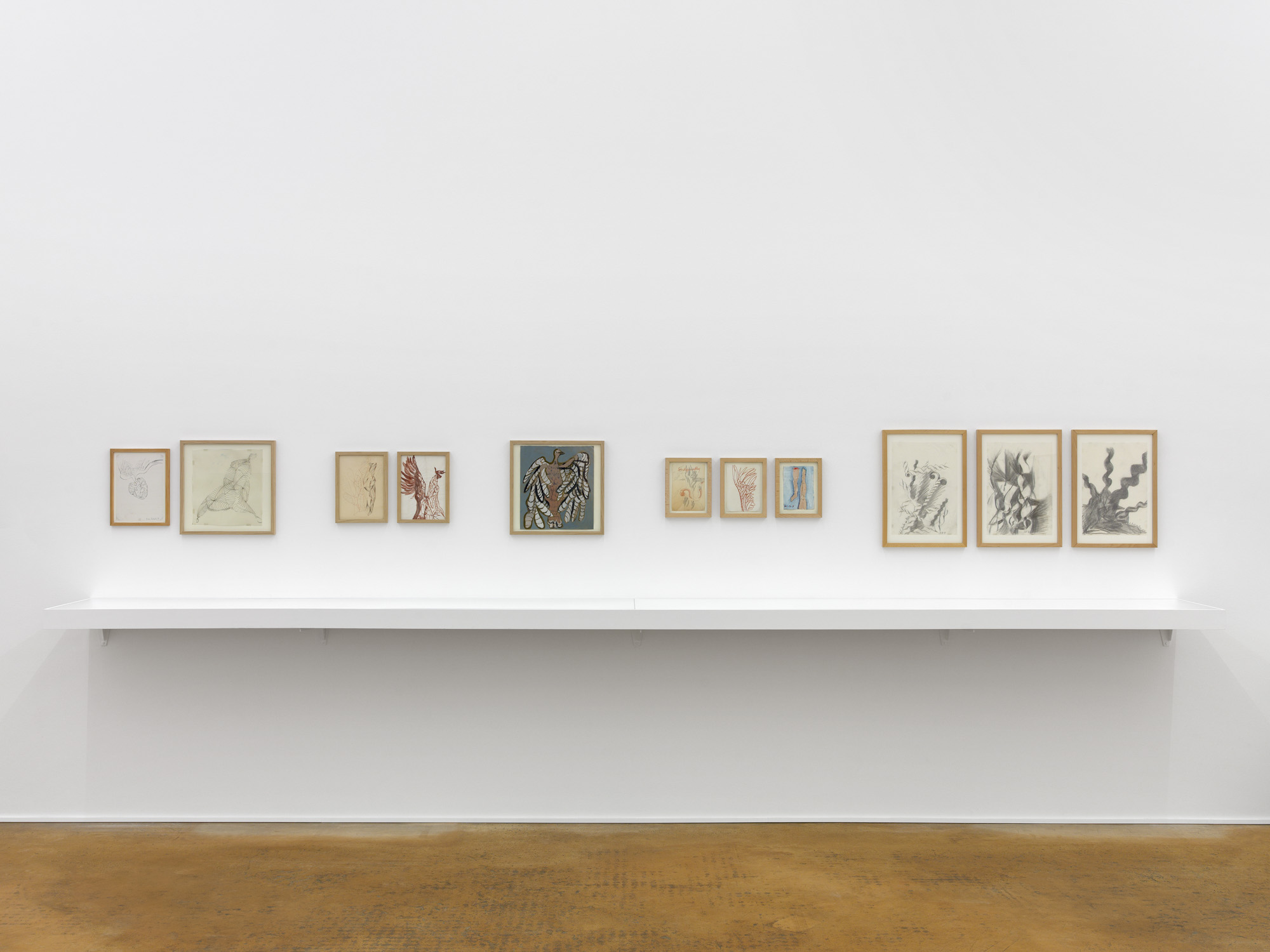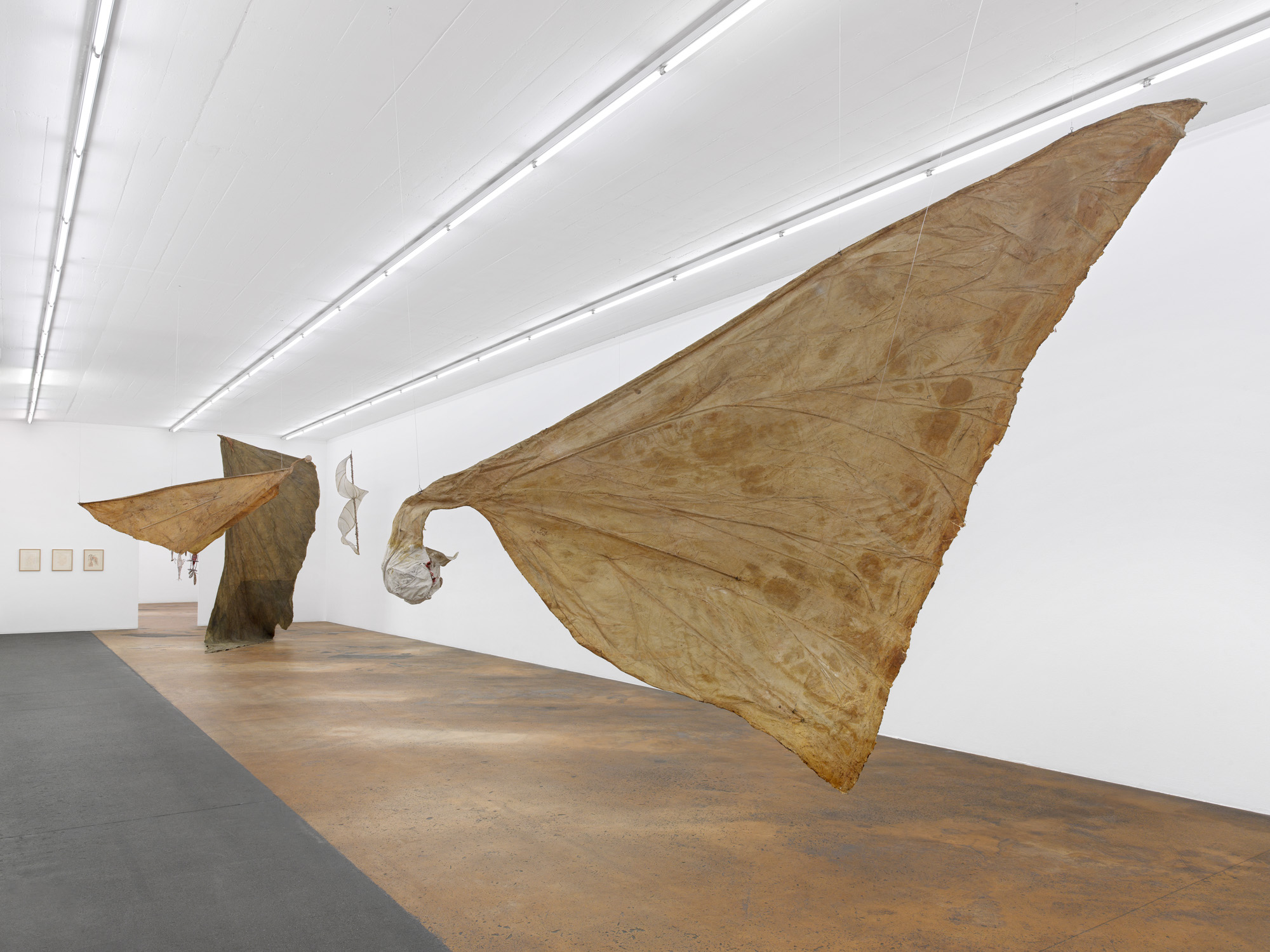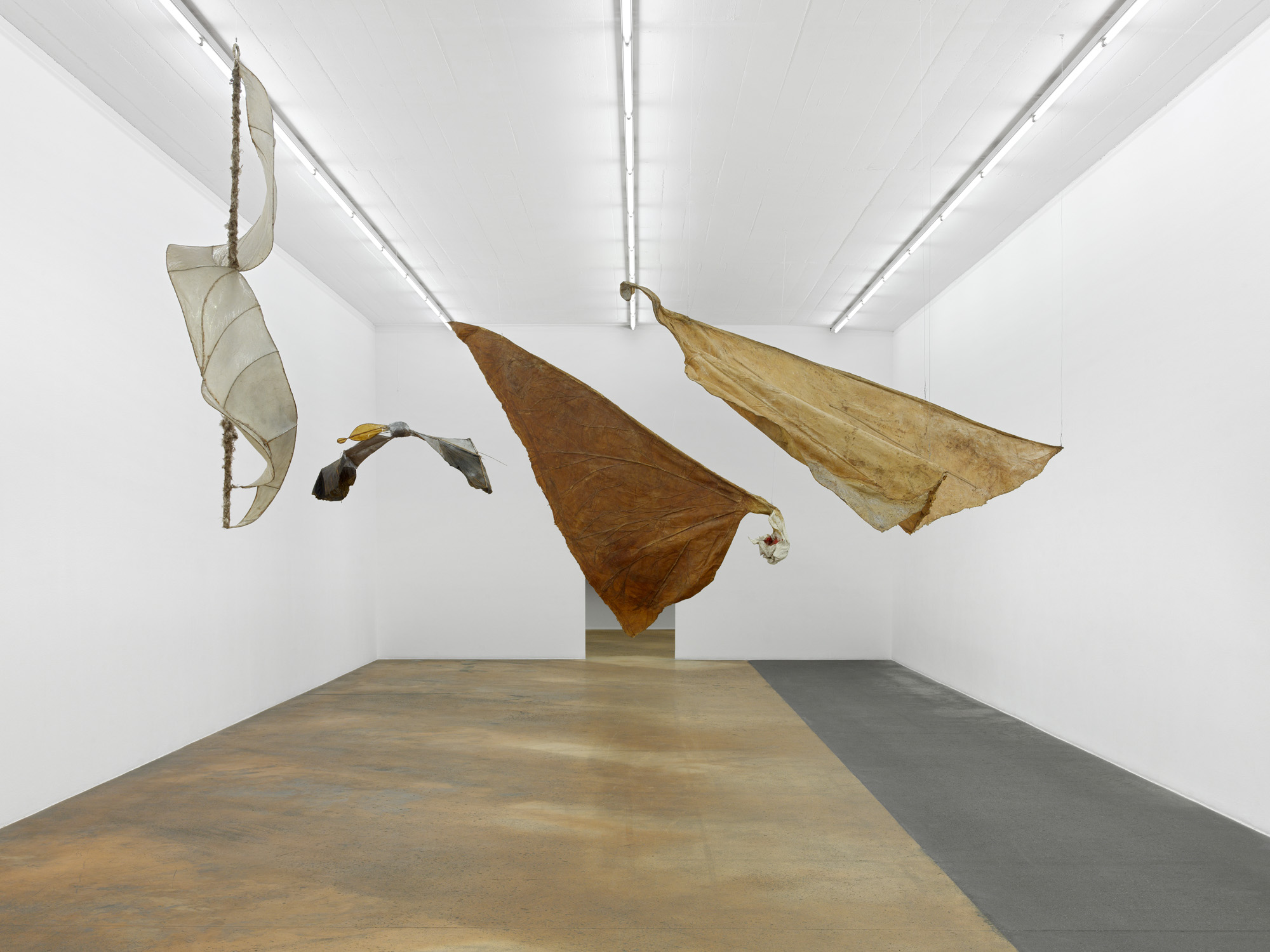Erica Pedretti (1930–2022) was born and grew up in Šternberk, Moravia (modern-day Czech Republic). In 1945, she arrived in Switzerland as a war refugee. She studied at the Zurich School of Art and Design before having to emigrate to New York in 1950, where she worked as a goldsmith. The patterns and motifs that were staples of Pedretti’s trade would appear time and again in a body of work spanning more than seven decades. She developed a special interest in fish and birds, which fascinated her on account of both their freedom of movement and the natural elements—water and air—through which they moved. Over the years, Pedretti developed an artistic practice marked by hybridization: bodies and beings (animals, plants, humans, and celestial creatures) imbued with allusions to notions of otherness and exile.
Pedretti returned to Switzerland in 1952, settling in the Canton of Graubünden. She married Swiss painter Gian Pedretti, with whom she would go on to have five children. In the 1960s, she steadily renounced working with metal in favor of paper, producing series of often narrative etchings based around the motif of the angel. Pedretti’s art is indissociable from her work as a writer, which had its origins in her childhood. She pursued both passions in parallel, reflecting her inclination for splitting her attention, without distinction, across multiple projects at once. Although Pedretti’s art was exhibited in several solo shows in Switzerland (Bern in 1975, Solothurn in 1976, Schaffhausen in 1981), it tended to be eclipsed by her prolific writings. She became one of the most widely read authors in Switzerland, publishing numerous articles, radio dramas, and novels.
In the late 1970s, the family moved to La Neuveville in the Canton of Bern, where Pedretti began producing sculptures in her large studio. Her output from this period included Objets à suspendre, a series of fragile, hollow objects that she displayed hanging from the ceiling. These pieces were formed from a wire frame, onto which Pedretti applied plaster, acrylic, feathers, and impregnated fabric in a manner suggestive of bones, membranes, skin, scales, and wings. Fish- and bird-like features blended into one another, although these objects were without exception in a state of suspension. At the same time, Pedretti experimented with pen and pencil drawings on paper, creating intricate patterns—meshes, twists, and turns with an organic quality—interspersed with beaks, shells, plants, and eyes. This surreal quality soon transposed to her sculptures: vast wings, measuring several meters across, covered with latex-stiffened fabric—Pedretti shared a fascination for latex with Swiss artist Heidi Bucher, her contemporary. Veined with bamboo and wire, these flexible, translucent wings appear as if torn from a being, taking on a life of their own. Some were intended to be displayed outdoors, in parks and other public spaces, where they would wear out over time until their ultimate destruction.
Pedretti’s hanging objects formed the core of the MAMCO exhibition, which looked back at the artist’s experimentation with different materials in the latter half of the 1970s, along with her interest in the hybridization of beings and shapes.
- Curated by Elisabeth Jobin
- With the support of Pro Helvetia, Fondation suisse pour la culture, Oertli Stiftung, the Municipalité de la Neuveville, SWISSLOS / Conseil du Jura bernois, and the Jan Michalski Foundation



